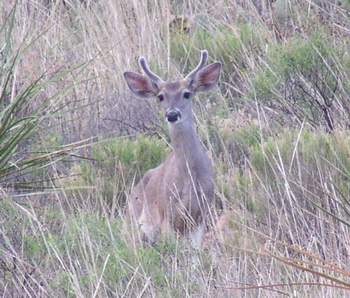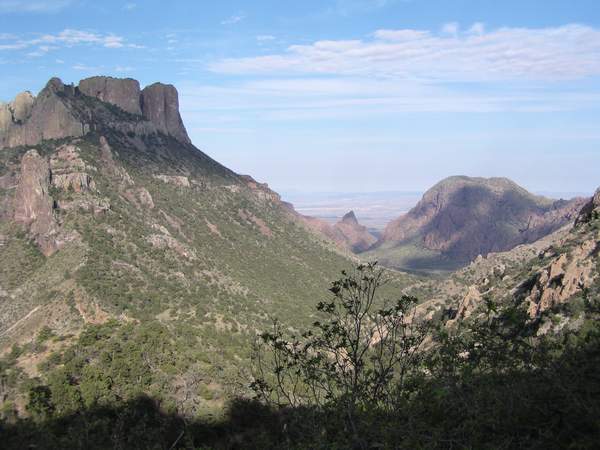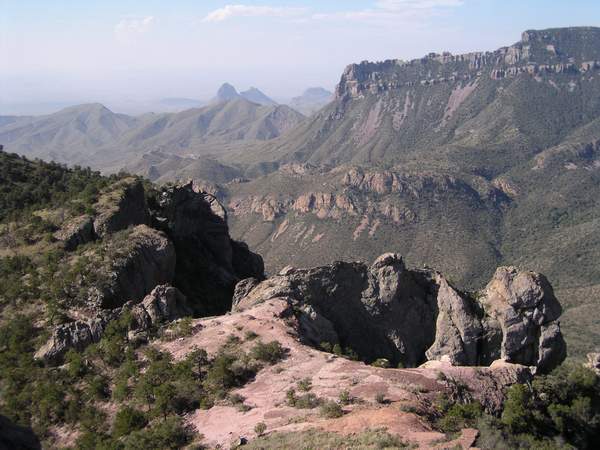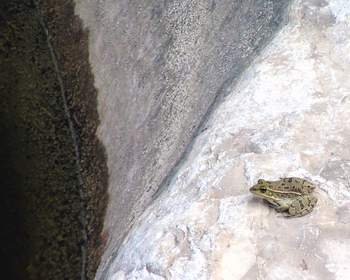

|
Big Bend Birding / Hiking Trip Photos Continued...
|
|
|
|
|
| Carmen Mountains White-tailed Deer These are small deer and rarely are found below 5,000 feet elevation. |
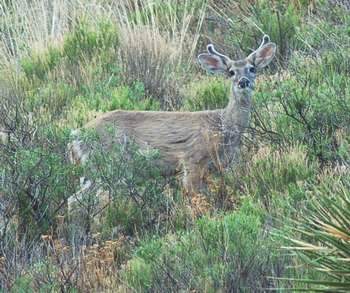 |
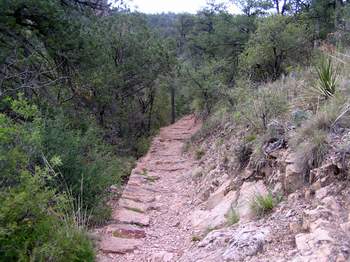 |
Along the Lost Mine Trail Now my favorite trail in Big Bend, the Lost Mine is a very scenic trail. |
| The Window from the Lost Mine Trail During the first mile of the trail looking west, views of the Chisos Basin and the Window are seen. (Click to enlarge) |
|
| End of the Lost Mine Trail... At 2.4 miles the trail levels off becoming an exposed ridge. Looking right, fantastic views can be seen of the Chisos East Rim towering over Juniper Canyon below it and the summit of Elephant Tusk in the distance to the South. Continuing to the very end of the trail looking East (left of the trail) gives the best scenic views of Pine Canyon and the Sierra Del Carmen Mountains in Mexico. |
|
| Lost mine trail A section of trail toward the end of the Lost mine trail winding through Pinyon Pine and Oaks. |
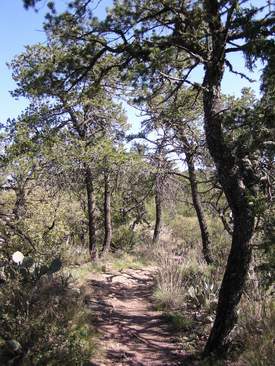 |
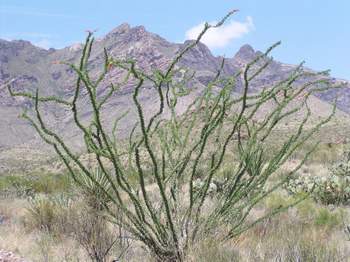 |
Ocotillo (Fouquieria splendens) The Ocotillo plant sends out leaves right after the rains and have bright red flowers on its tips. It is not a cactus. Ocotillos have woody stems and have true leaves. When in full leaf like this they remind me of giant pipe cleaners! |
| Entering Pine Canyon Pine canyon comes into view after walking the first mile of the trail through high desert grasslands. After passing lots of Sotols and the welcome shade offered by Texas Madrones alongside the trail, you begin to enter canyon and with it dense woodland consisting of Junipers, Oaks, Pinyon & Arizon Pines and more Texas madrones with their smooth pink barks. |
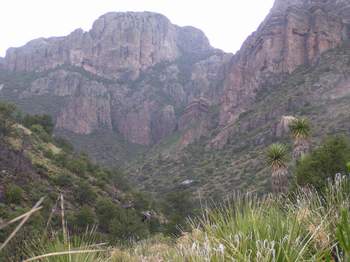 |
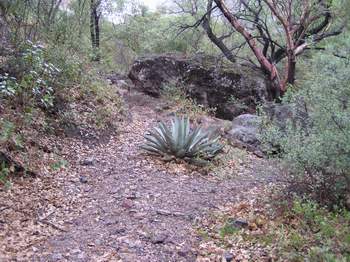 |
Pine Canyon Hiking into Pine Canyon a lone Agave lies in the center of the trail. The trail is a rugged one with lots of steep climbs as it winds its way up the canyon. It was here a huge storm opened up soaking everything in its way, including us! The sound of the thunder crashing within the canyon walls was amazing! At the end of the trail you reach the 200 foot pour-off which flows after rains such as the one we just had! |
| Ernst Tinaja After walking through a gravel wash at the begining of the trail you then begin to cross large flats of limestone. The further in you go, the older the surrounding area gets. Fossils of marine creatures such as clams appear in the colorful rocks, showing that the beds were originally deposited on the ocean floor about 90 million years ago. |
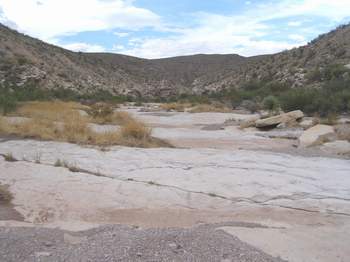 |
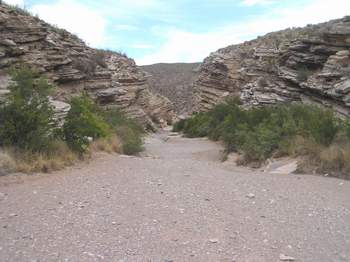 |
Bedrock strata The canyon walls are made up of colorful layers of tilted bedrock. |
| Rio Grand Leopard Frog, (Rana berlandieri) Ernst Tinaja On reaching the Tinaja several Leopard frogs were sitting around the rim of the water hole, jumping in as we approached. The Tinaja is an important water source for wildlife in the area & it always contains some water. However, when the water level is low many animals may become trapped due to its steep sides. The frogs, however, knew where to climb out. (Click to enlarge) |
|
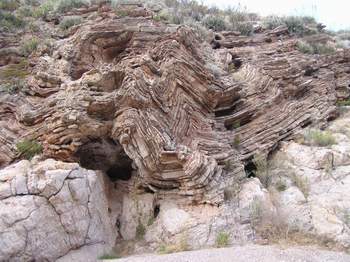 |
Boquillas Formation The twisted, tilted & folded layers, with colors ranging from white through pinks and deep reds was very cool. |
| The Tinaja (Pronounced "Tin-a-ha") is spanish for "Large Earthen Jar" View of the Tinaha and trail. The light grey rock around the water hole is "Buda Limestone", a contrast to the surrounding colors of the Boquillas Formation. |
 |
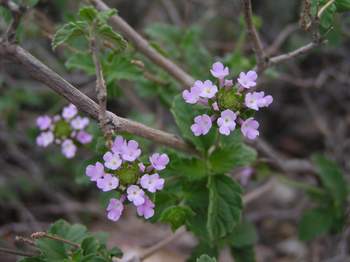 |
Desert Lantana The lantana flowers in Big Bend are so tiny, miniature versions of our backyard species, although the size of the plant seems to reach around 2 foot. |
| Cattails The cattails here are found on the Oak Spring Trail, just past the main creek. Water was gurgling underneath and it is neat to see a little spring come up and allow cattails to grow in the middle of the hot, dry foothills beneath the window. |
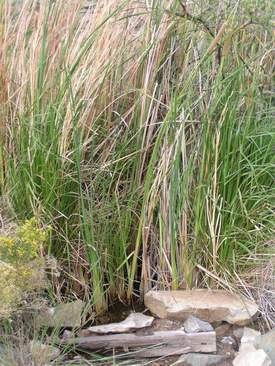 |
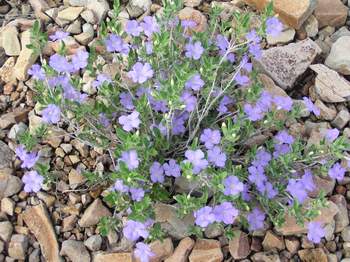 |
Desert Ruellia (Ruellia brittoniana) The closest ID I can find on this plant is Desert Ruellia, a species of wild petunia. It has a much smaller flower compared to our often invasive garden variety of "Mexican petunia" and reached heights of 1-2 feet. It was in full flower along the Oak Spring trail. |
| Oak Spring Trail Heading toward the view of the Window Pour-off the trail passes lots of plant species including Prickly pear cactus, Ruellia (above), Agave, Lechuguilla, Sotol, Esparanza, Mescat Acacia and many others I'm still identifying! |
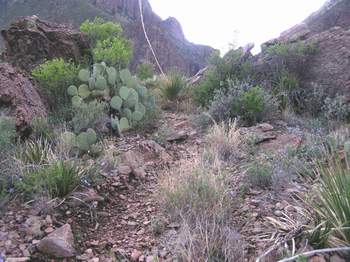 |
 |
Fern There are many species of fern in Big Bend that are very tolerant of dry conditions. (ID?) |
| Ceniza, Purple Sage (Leucophyllum frutescens) Ceniza, or Purple Sage is not a sage, but a member of the figwort family (Scrophulariaceae). From June to October the Ceniza comes into flower following the summer rains, coloring the landscape purple for miles. It grows to a height of 6'. A similar species called the "Big Bend Silverleaf" is a smaller bush growing to around 3 feet. Big Bend National Park Return to - © Copyright 2025 All rights reserved. 2185 |
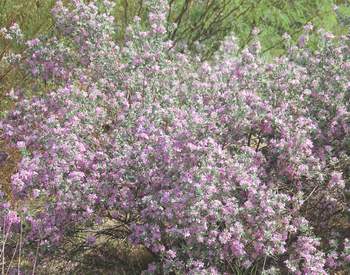 |

